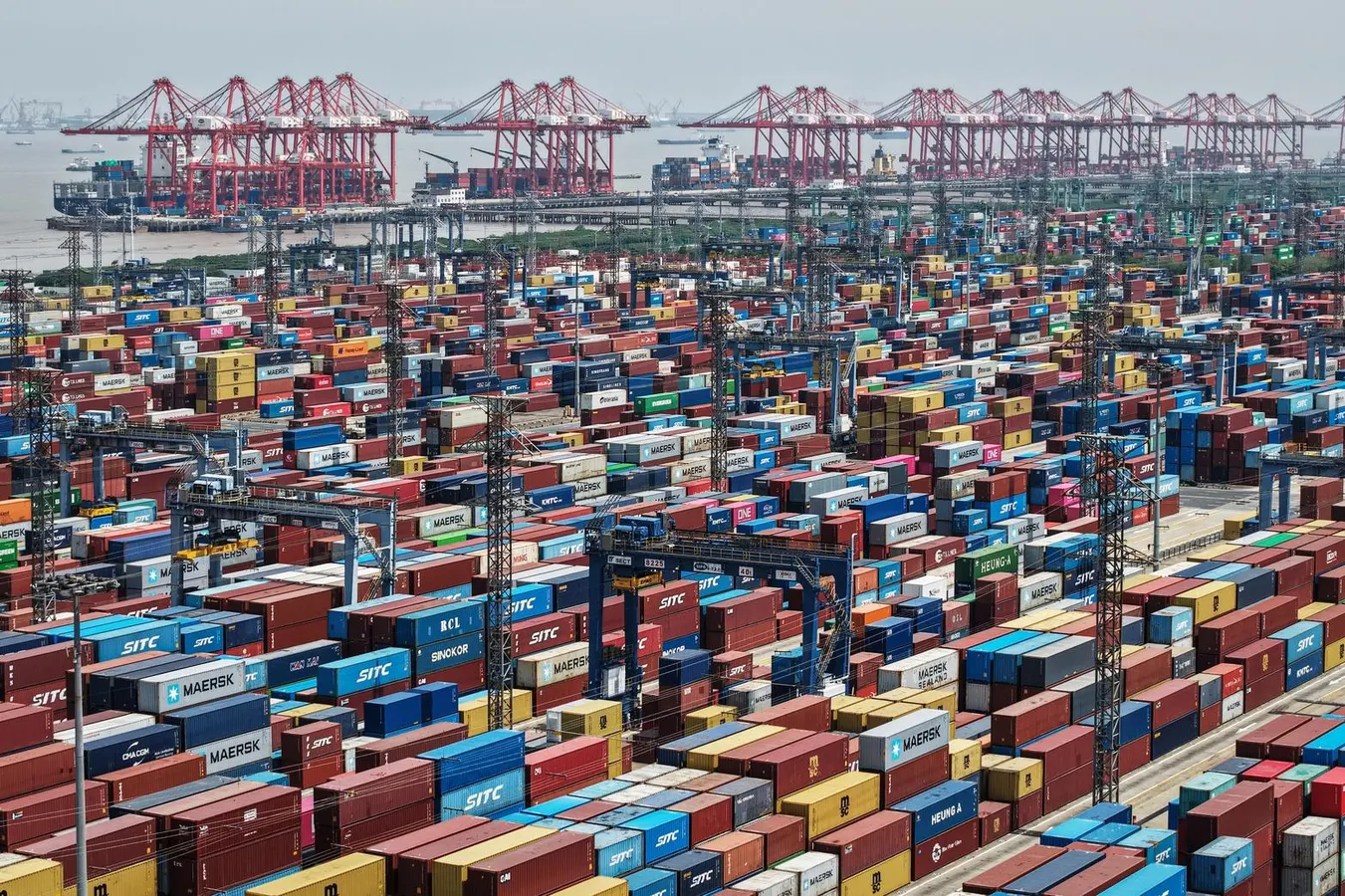By Afshin Molavi,Contributor,Giuseppe Cacace
Copyright forbes

TOPSHOT – An aerial view shows cargo containers stacked at a port in Shanghai on April 20, 2025. (Photo by AFP) / China OUT (Photo by STR/AFP via Getty Images)
AFP via Getty Images
Amid the headlines and noise of the latest tariffs from Washington and the growing fears about the state of global trade, a quiet movement to support free and open commerce is taking place in world capitals from Auckland to Abu Dhabi, and from Singapore to Santiago. In the process, a new map of global trade is emerging, new corridors are rising, and new hubs are flexing their trade muscle.
The recent announcement of the The Future of Investment and Trade (FIT) Partnership linking fourteen small and medium-sized countries across a vast geography represents one of several emerging initiatives to reinforce global trade. The initiative, led by a group of small but potent trading nations – Singapore, the United Arab Emirates, Switzerland and New Zealand – brings together countries from as far afield as Panama and Chile to Rwanda and Iceland together under one banner to support the expansion of trade.
In a recent interview with CNN, World Trade Organization (WTO) Director-General Ngozi Okonjo-Iweala, cited the new FIT partnership as an example of countries banding together to support free trade. She also noted that “the system has been battered and bent, but there is a stable core that is still resilient,” noting that 72% of world trade still operates under normal WTO global trade rules. The WTO also recently noted that trade in goods and services will rise nearly 1% in 2025 topping more than $33 trillion – slower growth than recent historic patterns, but still resilient amid the disruptions.
The Trade Deals Stitching the New Map
The FIT partnership is part of a wider emerging pattern: governments across the world are quietly stitching together new trade deals and alliances to keep markets open. In March, India inked a landmark free trade pact with the European EFTA bloc, slashing tariffs on nearly all trade flows with Switzerland, Norway, Iceland, and Liechtenstein. Just months later, Indonesia and the European Union reached agreement on their own deal, nine years in the making. Mercosur — the bloc of Brazil, Argentina, Uruguay, and Paraguay — has revived its long-delayed negotiations with Brussels, aiming to create one of the world’s largest free-trade areas. Meanwhile, across Asia, China and ASEAN unveiled their upgraded “FTA 3.0.”
TOPSHOT – (L/R) Argentina’s President Javier Milei, Uruguay’s President Luis Lacalle Pou, European Commission President Ursula von der Leyen, Brazil’s President Luiz Inacio Lula da Silva and Paraguay’s President Santiago Pena pose for the family picture of the LXV Mercosur Summit in Montevideo on December 6, 2024. Mercosur and the European Union have concluded “negotiations for a free trade agreement,” European Commission President Ursula von der Leyen announced in Montevideo on December 6. (Photo by Eitan ABRAMOVICH / AFP) (Photo by EITAN ABRAMOVICH/AFP via Getty Images)
AFP via Getty Images
MORE FOR YOU
Africa and Latin America are also pushing trade integration. The African Continental Free Trade Area (AfCFTA), bringing together 54 nations and a market of 1.4 billion people, holds the promise of reshaping commerce across the continent by lowering barriers and creating one of the largest single markets in the world. To be sure, its ambitions face numerous obstacles from weak infrastructure and overlapping regional blocs to uneven political will, but it still marks a step toward deeper African integration and greater continental trade.
Latin America, too, is busy expanding its trade links. Chile recently updated its trade pact with the European Union and Mexico has finalized a modernized agreement with the EU that now awaits ratification, promising to open markets further on both sides. EU officials have said the EU–Mercosur deal could be ratified by late 2025, though political resistance remains in some parts of Europe.
The United Arab Emirates, in particular, has been leaning heavily into global trade. Over the past four years, the UAE has signed Comprehensive Economic Partnership Agreements with more than two dozen partners ranging from India and Indonesia to Israel and Turkey, and in 2025 it launched negotiations on a free trade agreement with the European Union. The country of just over ten million people is a trade powerhouse, conducting more international trade than Brazil or Indonesia – nations with populations twenty-plus times larger.
Minister of State for Foreign Trade of the United Arab Emirates Thani bin Ahmed Al Zeyoudi and chair for the 13th World Trade Organisation Ministerial Conference addresses delegates at the beginning of the meetings in Abu Dhabi of February 26, 2024. The world’s trade ministers gathered in the UAE on February 26 for a high-level WTO meeting. (Photo by Giuseppe CACACE / AFP) (Photo by GIUSEPPE CACACE/AFP via Getty Images)
AFP via Getty Images
In 2024, the UAE recorded roughly $1.42 trillion in total trade in goods and services, compared with about $770 billion for Brazil and $580 billion for Indonesia. This outsized performance reflects the UAE’s role as a logistics and re-export hub, owing to its global aviation links, world-class ports, and a services sector that magnifies its trading reach. It also owes to its deliberate policy of going “all in” on trade, including recently upgrading its foreign trade portfolio to a full Ministerial position, headed by Minister of Foreign Trade Thani bin Ahmed El Zeyoudi.
Follow the Ships and the Hubs
While the great trade highways of Asia–Europe and Asia–North America still carry the most volume, new corridors are climbing fast. Intra-Asian flows, South–South routes linking Asia, Africa, and Latin America, and overland passages through Central Asia are expanding more quickly than the old stalwarts. The drivers are clear: demographics, urbanization, industrialization, rising middle classes and infrastructure in the Global South.
Shopping Mall
To understand the new map of global trade, it’s useful to follow the container ships. Inevitably, they converge on China’s giant ports — Shanghai, Ningbo, Shenzhen — but also on Jebel Ali in Dubai, the vital hub between Asia, Africa, and Europe. India is also staking a claim on the trade map. Mundra, the country’s largest port, has become a key gateway for India’s container traffic and continues to expand its reach. Further south, the newly opened Vizhinjam port near Kerala boasts world-class deep water and a location just ten nautical miles from the busy east–west shipping lane.
Jebel Ali anchors flows between three continents and its parent company, DP World, operates terminals, ports and logistics facilities across more than 80 countries, handling some 10% of world trade. DP World Chairman Sultan Bin Sulayem recently pushed back against the prevailing trade gloom in a CNN interview, noting: “We see growth in our business around the world.” He pointed to rising volumes not only in the Middle East but also across Africa, India, Brazil, Latin America, Indonesia, and the Far East.
When asked whether he was nervous about trade disruptions, he said: “The media is nervous. We are not.”
Global trade today is still a growth story, albeit one passing through some storms. The U.S trade picture remains mixed and fluid, but it should be noted that trade numbers for this year are largely in line with recent patterns. In 2024, total U.S goods and services trade stood at roughly $7.5 trillion, according to the U.S Department of Commerce.
The big corridors between Asia, Europe, and North America still dominate, but new routes are growing quickly, and new hubs are coming into their own. Ports from Jebel Ali to Mundra, Tanjung Priok in Jakarta, and Santos in Brazil, and rising South–South flows all point to a trading system adapting to disruption rather than collapsing under it. The map is shifting, but the movement of goods and services across borders remains one of the most durable features of the global economy.
Editorial StandardsReprints & Permissions



